Dish soap vinegar cleaning: it’s the dynamic duo your home has been waiting for! Are you tired of battling stubborn grime and lingering odors with harsh chemicals? I know I was! For generations, resourceful homemakers have sought natural and effective cleaning solutions, and the combination of dish soap and vinegar has emerged as a champion.
Think of your grandmother’s cleaning secrets – often passed down through generations, relying on simple, readily available ingredients. This DIY cleaning trick taps into that same wisdom, offering a powerful yet gentle way to tackle everything from greasy stovetops to sparkling shower doors.
But why is dish soap vinegar cleaning so effective? Well, vinegar’s acidity cuts through grease and grime, while dish soap helps to lift and emulsify dirt, making it easier to wipe away. Plus, it’s a budget-friendly and eco-conscious alternative to many commercial cleaners. In this article, I’m going to share my favorite DIY recipes and tips for using this amazing combination to keep your home sparkling clean, naturally!
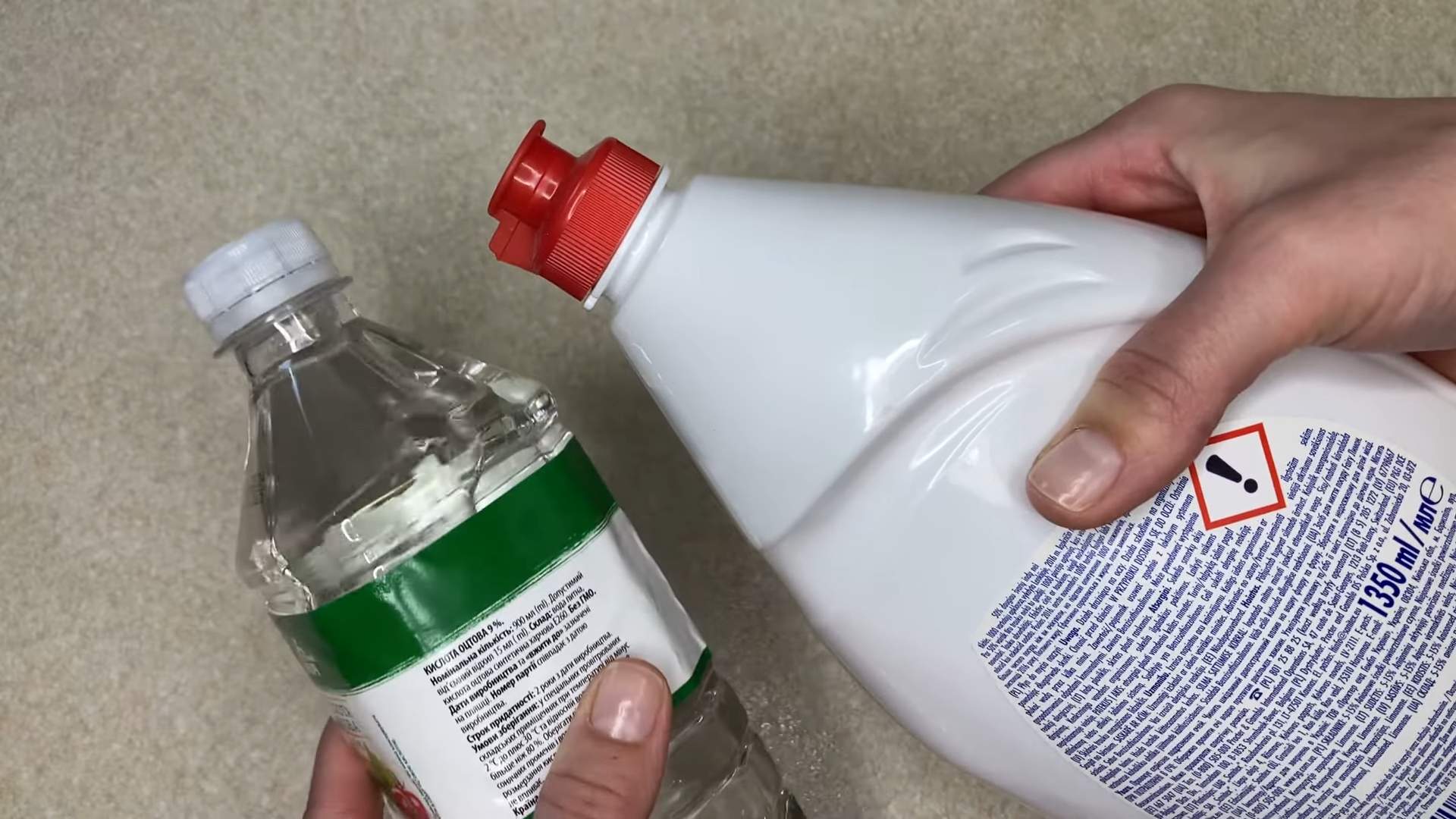
DIY All-Purpose Vinegar and Dish Soap Cleaning Solution
Okay, so you’re tired of harsh chemicals and overpriced cleaning products? Me too! That’s why I’m going to share my go-to recipe for an all-purpose cleaning solution that’s super effective, incredibly cheap, and uses just two ingredients you probably already have in your kitchen: vinegar and dish soap. Seriously, it’s a game-changer!
This cleaning solution is fantastic for tackling grime on countertops, cleaning bathroom surfaces, wiping down appliances, and even mopping floors (with a little dilution, of course!). It’s not recommended for natural stone surfaces like granite or marble, as the vinegar can etch them over time. Always test in an inconspicuous area first, just to be safe!
What You’ll Need
Before we dive in, let’s gather our supplies. This is a pretty short list, which is one of the things I love about this DIY project.
* White Vinegar: The star of the show! Plain white vinegar is a fantastic natural cleaner and disinfectant.
* Dish Soap: Choose a dish soap that cuts grease well. I usually opt for a basic, unscented variety to avoid any overpowering smells.
* Spray Bottle: A clean, empty spray bottle is essential for easy application.
* Measuring Cup or Spoons: For accurate measurements.
* Funnel (Optional): This can help prevent spills when pouring the mixture into the spray bottle.
The Magic Ratio: Getting the Mix Right
The key to a successful vinegar and dish soap cleaning solution is getting the ratio right. Too much vinegar, and the smell might be overwhelming. Too much dish soap, and you’ll end up with a sticky residue. After a lot of experimenting, I’ve found the perfect balance:
* 1 part Dish Soap
* 1 part White Vinegar
This 1:1 ratio works wonders for most cleaning tasks. However, you can adjust it slightly depending on your needs. For example, if you’re dealing with particularly stubborn grease, you might add a little extra dish soap.
Step-by-Step Instructions: Making Your Cleaning Solution
Alright, let’s get down to business! Here’s how to whip up your own all-purpose vinegar and dish soap cleaning solution:
1. Prepare Your Spray Bottle: Make sure your spray bottle is clean and dry. Any residue from previous cleaners could interfere with the effectiveness of your new solution.
2. Measure the Dish Soap: Using your measuring cup or spoons, carefully measure out the dish soap. For a standard 16-ounce spray bottle, I usually start with about 4 ounces of dish soap.
3. Measure the Vinegar: Now, measure out an equal amount of white vinegar. In this case, you’ll need 4 ounces of vinegar to match the 4 ounces of dish soap.
4. Combine the Ingredients: This is where the funnel comes in handy! Carefully pour the dish soap and vinegar into the spray bottle.
5. Gently Mix: Don’t shake the bottle vigorously! This will create a ton of bubbles. Instead, gently swirl the bottle to combine the ingredients. You want them to mix well without creating excessive foam.
6. Label Your Bottle: This is important! Clearly label your spray bottle as “Vinegar and Dish Soap Cleaning Solution.” This will prevent any confusion and ensure that everyone in your household knows what it is.
7. Test Before Use: Before using the solution on a large surface, test it in an inconspicuous area to make sure it doesn’t damage or discolor the material. This is especially important for painted surfaces or delicate fabrics.
Using Your New Cleaning Solution: Tips and Tricks
Now that you’ve made your cleaning solution, let’s talk about how to use it effectively. Here are a few tips and tricks I’ve learned over time:
* Spray and Wipe: For most surfaces, simply spray the solution onto the area you want to clean and wipe it down with a clean cloth or sponge.
* Let it Sit for Stubborn Grime: If you’re dealing with particularly stubborn grime or grease, let the solution sit for a few minutes before wiping it away. This will give the vinegar and dish soap time to break down the dirt and grime.
* Rinse if Necessary: For some surfaces, you may need to rinse with clean water after wiping with the cleaning solution. This is especially important for food preparation surfaces.
* Floor Cleaning: To use this solution for mopping floors, dilute it with water. I usually add about 1/4 cup of the cleaning solution to a bucket of warm water. Again, test in an inconspicuous area first!
* Tackling Soap Scum: This solution works wonders on soap scum in the bathroom. Spray it on, let it sit for a few minutes, and then scrub with a sponge or brush.
* Microwave Cleaning: To clean your microwave, spray the solution inside, let it sit for a few minutes, and then wipe it clean. The vinegar will help loosen any stuck-on food particles.
Troubleshooting: Common Issues and Solutions
Sometimes, things don’t go exactly as planned. Here are a few common issues you might encounter when making and using this cleaning solution, along with my solutions:
* Too Many Bubbles: If you shook the bottle too vigorously and ended up with a ton of bubbles, just let it sit for a while. The bubbles will eventually dissipate. Next time, remember to swirl gently instead of shaking.
* Sticky Residue: If you’re experiencing a sticky residue after using the cleaning solution, it’s likely that you used too much dish soap. Try diluting the solution with water or using less dish soap in your next batch.
* Strong Vinegar Smell: The vinegar smell can be a bit strong for some people. If you’re sensitive to smells, you can add a few drops of your favorite essential oil to the cleaning solution. Lavender, lemon, and tea tree oil are all good options. Just be sure to use essential oils that are safe for cleaning and won’t damage the surfaces you’re cleaning.
* Cloudy Solution: Sometimes, the mixture can appear cloudy. This is usually due to the type of dish soap you’re using. It doesn’t affect the cleaning power of the solution, so don’t worry about it.
Safety First: Important Precautions
While this cleaning solution is relatively safe, it’s still important to take a few precautions:
* Keep Out of Reach of Children and Pets: As with all cleaning products, keep this solution out of reach of children and pets.
* Avoid Contact with Eyes: Avoid getting the solution in your eyes. If contact occurs, rinse thoroughly with water.
* Don’t Mix with Bleach: Never mix this cleaning solution with bleach or other harsh chemicals. This can create dangerous fumes.
* Ventilate the Area: When cleaning, especially in enclosed spaces, make sure to ventilate the area well.
Beyond the Basics: Variations and Add-Ins
Once you’ve mastered the basic vinegar and dish soap cleaning solution, you can start experimenting with variations and add-ins. Here are a few ideas to get you started:
* Essential Oils: As mentioned earlier, adding a few drops of essential oil can add a pleasant scent and boost the cleaning power of the solution. Tea tree oil, for example, has antibacterial properties.
* Lemon Juice: A squeeze of lemon juice can help cut through grease and add a fresh scent.
* Baking Soda: For extra scrubbing power, you can add a small amount of baking soda to the cleaning solution. However, be careful, as baking soda can react with vinegar and create fizzing.
* Borax: A small amount of borax can help boost the cleaning power of the solution and act as a disinfectant. However, borax can be irritating to some people, so use it with caution.
Why This Works: The Science Behind the Clean
So, why does this simple cleaning solution work so well? It’s all about the properties of vinegar and dish soap.
* Vinegar: Vinegar is a mild acid that helps to dissolve dirt, grime, and mineral deposits. It also has antibacterial and antifungal properties.
* Dish Soap: Dish soap is a surfactant, which means it helps to break down the surface tension of water, allowing it to penetrate dirt and grease more effectively. It also helps to emulsify grease, making it easier to wash away.
Together, vinegar and dish soap create a powerful cleaning combination that’s effective on a wide range of surfaces.
Cost-Effective and Eco-Friendly: A Win-Win
One of the best things about this DIY cleaning solution is that it’s incredibly cost-effective. Vinegar and dish soap are both relatively inexpensive, and you probably already have them on hand. Plus, by making your own cleaning solution, you’re reducing your reliance on store-bought products that often come in plastic bottles. This makes it a more eco-friendly option as well.
Final Thoughts: Embrace the DIY Cleaning Life!
I hope you’ve found this guide helpful! Making
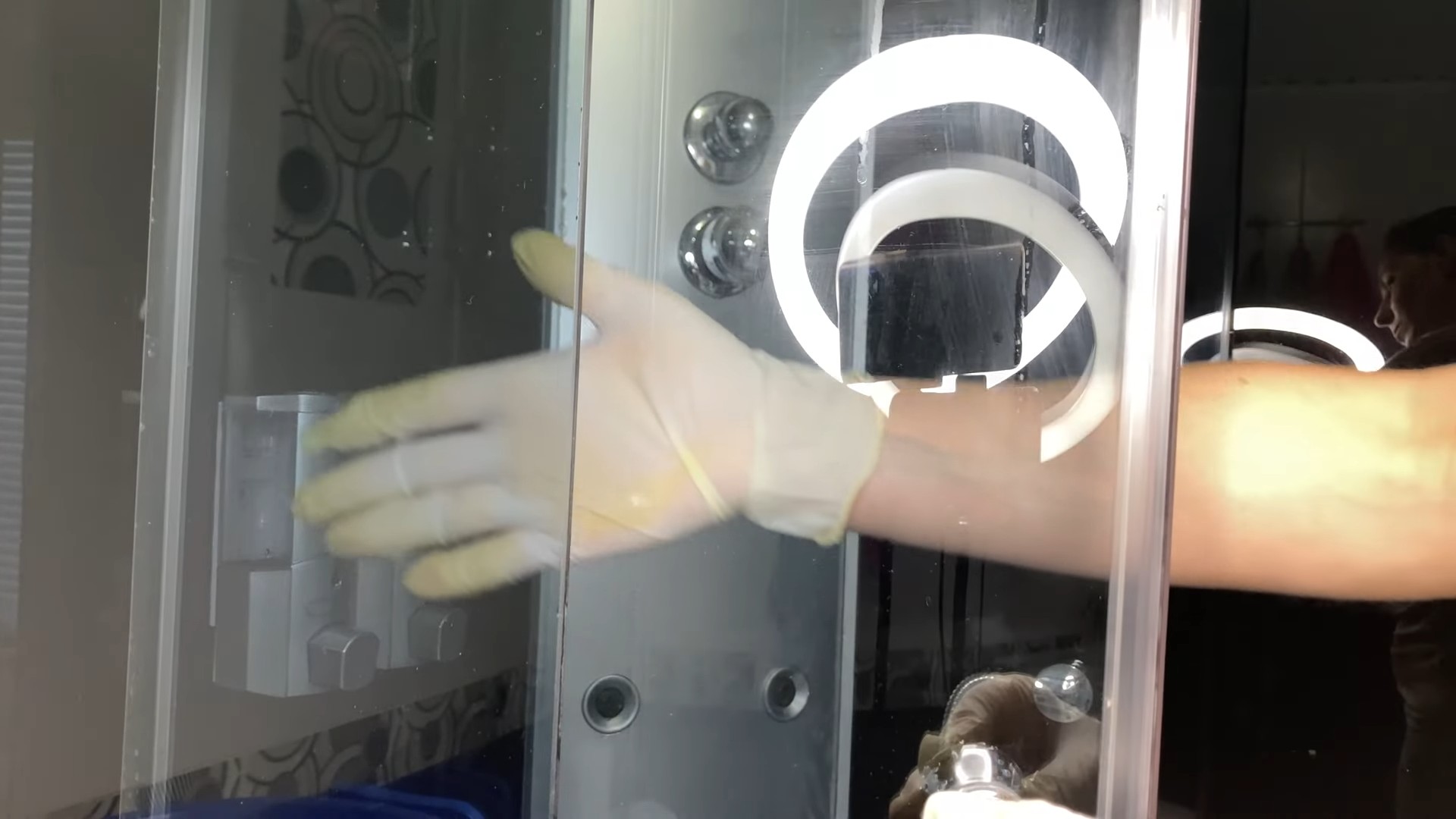
Conclusion
So, there you have it! This simple yet incredibly effective dish soap vinegar cleaning solution is a game-changer for anyone looking to simplify their cleaning routine and achieve sparkling results without harsh chemicals. We’ve explored how combining the degreasing power of dish soap with the natural disinfecting properties of vinegar creates a powerhouse cleaner that tackles everything from grimy stovetops to stubborn bathroom stains.
Why is this DIY trick a must-try? Because it’s economical, eco-friendly, and remarkably versatile. You’re likely to already have both ingredients in your pantry, saving you money on expensive commercial cleaners. Plus, you’re reducing your exposure to potentially harmful chemicals and minimizing your environmental impact. It’s a win-win!
But the benefits don’t stop there. The beauty of this solution lies in its adaptability. Feel free to experiment with different types of dish soap to find your favorite scent and cleaning power. For extra stubborn grime, consider adding a tablespoon of baking soda to the mix for a gentle abrasive boost. If you’re dealing with mold or mildew, a few drops of tea tree oil can enhance the disinfecting properties. And for a refreshing citrus scent, infuse your vinegar with lemon or orange peels for a few days before mixing it with the dish soap.
We’ve found that using a spray bottle makes application a breeze, allowing you to target specific areas with precision. For larger surfaces, a sponge or microfiber cloth works wonders. Remember to always test the solution on an inconspicuous area first, especially when cleaning delicate surfaces like natural stone or painted walls.
Don’t just take our word for it – we urge you to try this dish soap vinegar cleaning solution for yourself! We’re confident that you’ll be amazed by the results. It’s a simple, effective, and budget-friendly way to keep your home clean and fresh.
Once you’ve given it a try, we’d love to hear about your experience. Share your tips, tricks, and before-and-after photos in the comments below. Let’s build a community of DIY cleaning enthusiasts and discover even more ways to harness the power of these simple ingredients! Your feedback will not only help others but also inspire us to continue exploring innovative and sustainable cleaning solutions. We are excited to see how this simple solution transforms your cleaning routine!
Frequently Asked Questions (FAQs)
Is it safe to mix dish soap and vinegar?
Yes, it is generally safe to mix dish soap and vinegar for cleaning purposes. However, it’s crucial to understand the type of dish soap you’re using. Avoid mixing vinegar with dish soaps that contain bleach, as this can create harmful chlorine gas. Most common dish soaps are safe to mix with vinegar. The combination creates a powerful cleaning solution that’s effective against grease, grime, and many common household stains. Always ensure proper ventilation when cleaning, regardless of the cleaning solution you’re using.
What surfaces can I clean with a dish soap and vinegar solution?
The dish soap and vinegar cleaning solution is incredibly versatile and can be used on a wide range of surfaces. It’s excellent for cleaning kitchen countertops (excluding natural stone like marble or granite, which can be damaged by vinegar), stovetops, ovens, sinks, bathroom tiles, shower doors, and even floors (again, avoid using it on natural stone or hardwood floors without proper dilution and testing). You can also use it to clean windows and mirrors for a streak-free shine. It’s effective on stainless steel appliances, but always wipe dry to prevent water spots. Remember to test the solution on an inconspicuous area first, especially on delicate or painted surfaces, to ensure it doesn’t cause any discoloration or damage.
What is the best ratio of dish soap to vinegar for cleaning?
A good starting point is a 1:1 ratio of dish soap to vinegar. For example, you can mix 1 cup of dish soap with 1 cup of vinegar in a spray bottle. However, you can adjust the ratio depending on the cleaning task. For lighter cleaning, you might use a higher proportion of vinegar. For heavier grime, you might slightly increase the amount of dish soap. Remember that a little goes a long way, so start with the recommended ratio and adjust as needed. Overusing dish soap can leave a residue, so it’s always better to start with less and add more if necessary.
Can I use any type of vinegar for cleaning?
White distilled vinegar is generally recommended for cleaning due to its acidity and lack of color, which minimizes the risk of staining. However, you can also use apple cider vinegar, although it has a slightly weaker acidity and a distinct smell. Avoid using balsamic vinegar or red wine vinegar, as their color can stain surfaces. White distilled vinegar is the most cost-effective and versatile option for most cleaning tasks.
Will the vinegar smell linger after cleaning?
The vinegar smell will dissipate relatively quickly after cleaning. Opening windows and ensuring proper ventilation can help to speed up the process. If you’re particularly sensitive to the smell of vinegar, you can add a few drops of essential oils, such as lemon, lavender, or eucalyptus, to the cleaning solution to mask the odor. The essential oils will also add a pleasant fragrance to your home.
Can I store the dish soap and vinegar cleaning solution?
Yes, you can store the dish soap and vinegar cleaning solution in a sealed container, such as a spray bottle, for several weeks. However, it’s best to use it within a reasonable timeframe to ensure its effectiveness. Over time, the solution may separate slightly, so give it a good shake before each use. Store the solution in a cool, dark place away from direct sunlight to preserve its quality.
Is this cleaning solution safe for pets and children?
While the dish soap and vinegar cleaning solution is generally considered safer than many commercial cleaners, it’s still important to exercise caution when using it around pets and children. Keep the solution out of reach of children and pets, and avoid spraying it directly onto surfaces that they may come into contact with. Ensure that surfaces are thoroughly rinsed and dried after cleaning to remove any residue. If your pet or child ingests the solution, contact a veterinarian or medical professional immediately.
Can I use this solution to clean my toilet?
Yes, the dish soap and vinegar cleaning solution can be used to clean your toilet. Pour the solution into the toilet bowl and let it sit for a few minutes to loosen any stains or buildup. Then, scrub the bowl with a toilet brush and flush. For stubborn stains, you can add a cup of baking soda to the bowl along with the solution and let it sit for a longer period before scrubbing. This combination is effective at removing hard water stains and mineral deposits.
Does this solution disinfect as well as commercial cleaners?
While vinegar has disinfecting properties, it’s not as powerful as some commercial disinfectants. However, it is effective against many common household bacteria and viruses. For situations where thorough disinfection is required, such as cleaning surfaces after handling raw meat, you may want to use a stronger disinfectant. However, for everyday cleaning and maintenance, the dish soap and vinegar solution is a good choice for reducing germs and keeping your home clean.
What if the solution leaves streaks on my windows or mirrors?
If the dish soap and vinegar solution leaves streaks on your windows or mirrors, it could be due to using too much dish soap or not wiping the surface dry thoroughly. Try reducing the amount of dish soap in the solution or using a clean, dry microfiber cloth to wipe the surface after cleaning. You can also try using a squeegee to remove excess solution and prevent streaks. Another tip is to clean windows and mirrors on a cloudy day, as direct sunlight can cause the solution to dry too quickly and leave streaks.

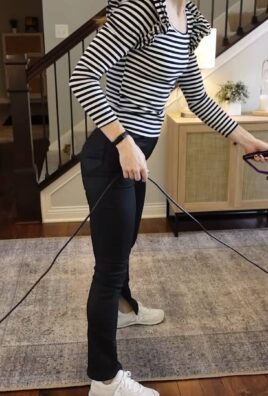
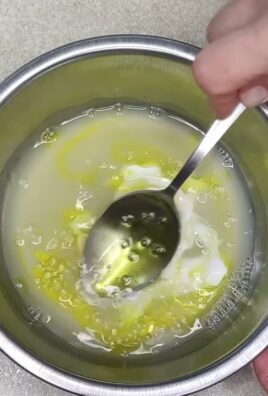
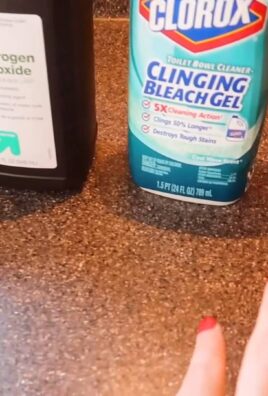
Leave a Comment